Хаас за Австралия
Ромен Грожан:
Rich Energy Haas F1 Team tested at Circuit de Barcelona – Catalunya for eight days over a 12-day span. How did it go and how did it prepare you for Australia?
It went very well. The most important thing was to get a good feeling in the car early on. When you get that good feeling, you know the car is well born. That’s important to start the season – to be able to start on a high. It went well. Reliability, we had a few issues, but we’ve been working well to sort them out. I believe we’re now ready to attack the first race in Australia. Obviously, there’s always more and more you want to do, but then it’s becoming circuit-specific. Now it’s about getting the baseline setup in Melbourne and then fine tuning for Bahrain, China and so on.
Did testing provide a glimpse of where Rich Energy Haas F1 Team stacks up to the competition, or will it only be known after a handful of races?
I think we’ve got a first idea, but it’s really difficult to read too much into it. I’d rather wait for the first few races to know where we are.
How would you describe the VF-19, especially in comparison to last year’s car?
It’s very sexy. It’s a beautiful car. It handles very well. The feeling in the car is better than it was last year. I think the team has done a really good job on its understanding of the new front wing and getting ready for the season to start. I’m really looking forward to driving the car on different kinds of circuits.
The new rules package essentially consists of simplified front and rear wings and less intricate, repositioned bargeboards – all of which were done to minimize a car’s aero wake and promote passing. After two weeks of testing, do you feel we’ll see more passing this season and, specifically, more passing in the Australian Grand Prix?
I don’t know. I haven’t had the chance to follow another car yet. The Australian Grand Prix is always a race where there’s very little overtaking. It’s just the nature of the circuit. It’s such a great grand prix, it almost doesn’t matter. Kevin (Magnussen) was very enthusiastic when he followed another car, but I haven’t had that chance. The only thing I noticed is when you don’t use the DRS, you feel very slow on the straight compared to when you do use it. Therefore, we could see a fair bit of overtaking with DRS. Again, we’ll need to wait and see.
Rich Energy Haas F1 Team’s debut in the 2016 Australian Grand Prix was pretty remarkable, with your sixth-place finish the best debut for any Formula One team since 2002 when Mika Salo finished sixth for Toyota, also at the Australian Grand Prix. Can you describe that moment and what it meant for you and the team?
It meant a lot. It was a result we were clearly not expecting after a tough qualifying. We had a brilliant race. When we took the checkered flag, for us, it was clearly as good as winning the race. It was fortunate, but perfect.
What is your favorite part of the Melbourne Grand Prix Circuit?
I love the backstraight with the high-speed corner – turns 10 and 11.
Кевин Магнусен: [tr]Rich Energy Haas F1 Team tested at Circuit de Barcelona – Catalunya for eight days over a 12-day span. How did it go and how did it prepare you for Australia?
I think it went well. You always want more, and you always wish you could do more kilometers. At the end of the day, what’s important is you make progress and put a car on track that feels good and feels like it has potential. We had that. I went out on track and immediately felt happy in the car. Yes, we had a few too many issues which stopped us from running but, at the end of the day, that’s what testing is for.
Did testing provide a glimpse of where Rich Energy Haas F1 Team stacks up to the competition, or will it only be known after a handful of races?
Of course, you get an idea of where you stand, whether you’re completely off or whether you might have a good chance. You never completely know where you are until you hit the track in qualifying in Australia. Even then, a lot of things can happen in the coming races. We have a good feeling. We’re happy we’re going into the first race with the car that we have.
How would you describe the VF-19, especially in comparison to last year’s car?
I think we all expected that the cars would be slower, at least to begin with. We got to Barcelona and saw that everyone was going faster than last year. So, of course, I felt more grip in the car but, even more importantly, I think balance-wise it wasn’t too different, and if anything, it was stronger in a few areas. I’m looking forward to seeing what it can do compared to the other teams.
The new rules package essentially consists of simplified front and rear wings and less intricate, repositioned bargeboards – all of which were done to minimize a car’s aero wake and promote passing. After two weeks of testing, do you feel we’ll see more passing this season and, specifically, more passing in the Australian Grand Prix?
Yes, I followed a few cars on track in Barcelona testing. For me, there is a difference. It’s hard to say, though, as in testing everyone’s on different fuel loads and tires. The cars that I followed, I was either a lot slower or a lot faster. Therefore, it makes it difficult to say if it was easier or harder to pass. Just feeling the car behind these other cars, I felt like I had a lot more stability, and not as much instability as we had with the older cars. I have a feeling we’ll see an improvement in the ability to follow, but whether the quality of the races is going to be better for that reason, that’s a different question. We’ll see about that.
Rich Energy Haas F1 Team had a remarkable debut in the 2016 Australian Grand Prix. And in 2014, you also had a remarkable Formula One debut at Australia, starting fourth and finishing second to Nico Rosberg. How were you able to achieve such a strong result in your first Formula One race?
I think I just went into it with a smile. I enjoyed it. I didn’t really think too much about the race. I had nothing to lose. I just went for it. I drove at my best, had a bit of luck as well, and I ended up on the podium. It was a great experience and a memory I will have forever. It’s always going to be quite cool to say that I finished second in my first Formula One race, although it would have been nice to win. I’ll do that another time.
What is your favorite part of the Melbourne Grand Prix Circuit?
I’d say turn 11 – the chicane – because it’s fast.
Гюнтер Щайнер: Rich Energy Haas F1 Team tested at Circuit de Barcelona – Catalunya for eight days over a 12-day span. How did it go and how did it prepare you for Australia?
The test, in general, was good. We had a few small problems, which we can address before Australia. Obviously, we test to find these problems and, hopefully, we’ve found them all. Performance-wise, it’s too early to say how we’ll go in Australia. We have to wait until we go into qualifying on Saturday.
Did testing provide a glimpse of where Rich Energy Haas F1 Team stacks up to the competition, or will it only be known after a handful of races?
We’ll know after qualifying where we are. The long-term performance for 2019, we’ll only find that out after we’ve started a few races.
How would you describe this year’s car in relation to last year’s car? Is it an evolution or, with the new rules package, is it a drastically different racecar?
It’s a mix of the two. It’s an evolution, but you try to integrate the changes in the regulations as best as you can, but you’re not completely redesigning the whole car. The parts that need to change, they’re changed, and then you adjust the rest of the car to it.
The new rules package essentially consists of simplified front and rear wings and less intricate, repositioned bargeboards – all of which were done to minimize a car’s aero wake and promote passing. After two weeks of testing, do you feel we’ll see more passing this season and, specifically, more passing in the Australian Grand Prix?
The aim of the regulation change was to make passing easier, but the proof is in the pudding. We’ll only really see after three or four races how it works out. Australia, in general, is a very difficult track to pass at – probably one of the most difficult ones. If it doesn’t work there, we shouldn’t jump to the conclusion that it will not work for the whole year. We need to see if it works or not, and you only really find these things out in race situations.
Compared to 2018’s schedule, everything began a week earlier this year, with both winter testing and the Australian Grand Prix coming one week sooner. How did this impact your car build and your overall preparation for the season-opening race?
As long as we’re aware of the changes and we agree to them – which we obviously did, otherwise they wouldn’t have happened – you adjust pretty well. You simply plan a week earlier. It maybe sounds too simple of an answer, but that’s what it is. You know about it, you adjust, and you do what you have to do.
Car preparation is, obviously, a major component of the season opener, but what about human preparation? What has the team done to prepare itself for the attention to detail necessary to compete in Formula One, particularly in regard to pit stops?
We obviously haven’t forgotten last year’s pit stops in Australia, which went wrong. This year we’ve put a lot of emphasis on arriving there prepared. We brought a 2018 car to our car build in Italy so we could train every day and work on pit stops. We did the same in Barcelona, as the current car is not always available for pit stop practice when you test. Every day the whole crew practiced around 10 to 12 pit stops a day.


















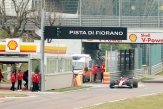
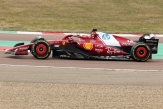
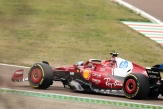
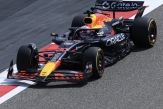
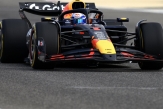
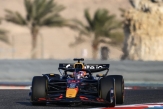

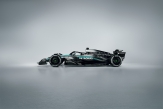
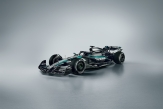
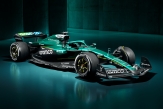
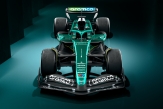
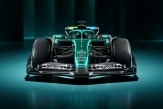
.jpg)
.jpg)
.jpg)

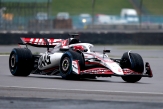

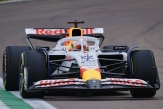
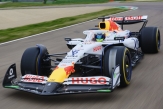
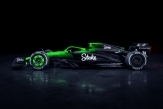
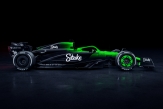

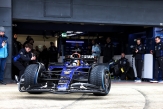
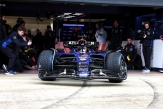
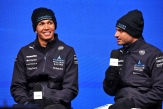

06/11/2025 от Огнян Тенчев (drJeckyll), няма коментари